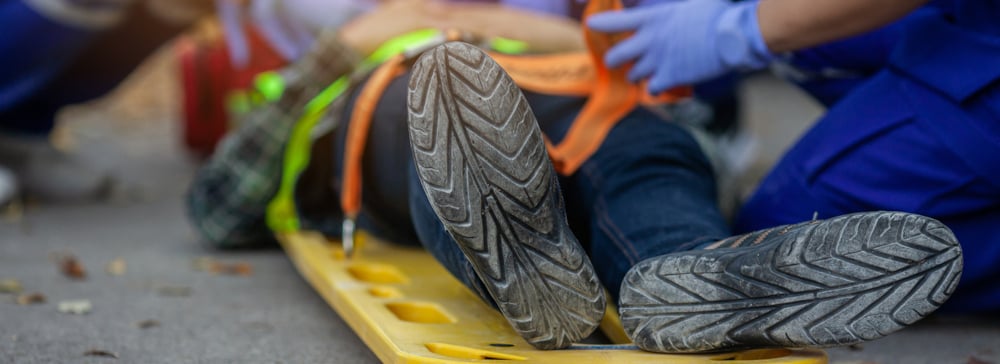Table of Contents
Catastrophic injuries change lives forever. These significant injuries can make it impossible to be whole again or hold a job. Insurance coverage often is insufficient to cover a lifetime of medical and rehabilitation expenses or to alleviate the financial burden a family then faces.
If an accident caused the injury, you may have a legal path leading to compensation. Learn more by contacting an experienced Boca Raton personal injury lawyer who has handled such cases. A skilled catastrophic injury attorney in Boca Raton can build a case to help maximize potential recovery.

Any injury received from an accident or intentional incident can be called a personal injury. However, only some of these injuries are catastrophic. Catastrophic injuries are extreme injuries that can result in life-changing consequences for the victim.
These injuries are more defined by their consequences than the injury or cause. Catastrophic injuries include the “consequences of an injury that permanently prevent an individual from performing any gainful work” (42 USC § 3796b), which is wording adopted from the American Medical Association. Paralysis is a common injury one suffers during a catastrophic accident.
These are the common injuries that can have a catastrophic impact, and they can occur in many different circumstances:
Depending on the individual, the sort of injury that will be catastrophic may be subjective and require an in-depth analysis. This can be a very nuanced inquiry into how the injury would affect the career prospects and quality of life of the injured party.
An experienced Boca Raton catastrophic injury lawyer can help an individual recover damages depending on the specific type of injury they have suffered.
Catastrophic injuries involve damage to a vital area such as the head or back, or severe damage to non-vital areas. The most common types of catastrophic injuries include:
There are many types of traumatic brain injuries, some inherently more severe than others, with new research, diagnoses, and treatments being produced regularly. Each type of TBI comes with its own challenges regarding symptoms and recovery time. Severe head injuries have been known to affect brain function as well as causing memory issues, drastically affecting impulse control, or even causing a significant change in personality. These injuries include:

Amputations are one of the worst injuries that can result from an accident or incident and have both physical and psychological effects that can be life-changing. Some of the factors determining the degree of seriousness of amputations include:
There are two types of amputation:
Depending upon whether the amputation is partial or complete and what was amputated, the physical effects can include:
An injury as extreme as an amputation has psychological effects as well. This includes:
Spinal cord injuries are another catastrophic injury that can drastically affect the life of the victim, requiring extensive treatment and long recovery periods. Spinal cord injuries can necessitate intrusive, expensive surgeries and an extended process of rehabilitation.
Spinal cord injuries can be either incomplete/partial, or complete. A complete spinal cord injury is one that causes total paralysis at and below the injury. This can include quadriplegia (paralysis of all four limbs) or paraplegia (paralysis of the legs). An incomplete injury will allow some function to remain, with the brain still being able to communicate via certain spinal pathways.
In the case of an incomplete injury, though it may not be immediately apparent (especially in the case of post-accident adrenaline), medical treatment must be sought immediately, as it could worsen.
If you have recently been in an accident or had any head or back trauma, some symptoms of an incomplete spinal injury include:
The possible causes of catastrophic injuries are fairly broad, and can even result from things fairly commonplace, such as tripping. Common causes of catastrophic injuries include:
Florida follows the modified comparative negligence rule, meaning that a victim’s judgment will be reduced in proportion to the amount of fault they bear for their injury up to 50%. If they are found to be 51% or more at fault for their injuries, they are barred from recovery. For instance, should a court decide that both a plaintiff and a defendant were negligent and the plaintiff was 80% at fault for their injury, they would be unable to recover any compensation.
There are three basic types of compensation for most civil claims in general:
Economic damages are mathematically demonstrable damages associated with losses or expenses resulting from an accident or incident.
These can include:
Non-economic damages address the intangible aspects suffered by the injured party. These can be a bit more difficult to calculate as they can often be subjective and without many rules regarding calculating amounts.
These damages can include:
In the tragic event of a death resulting from negligence, medical malpractice, a defective product, or an intentional act, loved ones will often be able to file a wrongful death claim if death results. This is true even if the death of the decedent occurs months after the accident or incident; the statute of limitations is two and a half years from the date of the death of the decedent, not the accident or incident.
In addition to the damages mentioned above, compensation for a wrongful death can include:
Punitive damages are awarded against a party that has acted particularly egregiously.
As the name implies, they are awarded to punish the party and consider:
These factors are relatively broad and allow a lot of room for argument. Should you have a claim that could include punitive damages, it is essential to speak with a catastrophic injury claims attorney who handles civil suits involving catastrophic injuries and knows how to argue this punitive damages calculation.
For these accident victims, life can change suddenly and dramatically. However, before they can receive any monetary compensation, they must prove that the injury was the fault of another party.
Proving fault in a negligence case is done by a specific logical formula, analyzing whether the injury or loss was caused by someone acting in an unreasonable manner that foreseeably put people at risk, and whether their unreasonable actions directly led to the injury or loss. Should negligence be found, there will then be an analysis of damages.
The elements analyzed as part of this determination are:
In negligence cases, the defendant has certain defenses available, each seeking to negate one or more of the negligence elements by providing evidence.
The defendant can attempt to prove that they did not owe a duty of care in the circumstances of the case and that they did act with reasonable care.
The defendant can also attempt to prove that the plaintiff’s own actions caused or contributed to the injury, or that the plaintiff committed an act and, in so doing, assumed the possibility of risk.
If the defense is successful, an award for damages will be dismissed or reduced by the percentage the plaintiff is found at fault. This can be combatted by consulting with a catastrophic injury law firm.
Call Us Now for a Free Consultation

If you have suffered a catastrophic injury, it is in your best interest to promptly seek a catastrophic personal injury lawyer in Boca Raton to ensure your legal rights.
If you are injured in Palm Beach County or South Florida, a Boca Raton catastrophic injury attorney can assess the strength of your case, advise you on the best course of action to take, and prepare your case by conducting legally binding interviews with all parties and witnesses, investigating the facts of the event and other pertinent facts, and negotiating with insurance carriers to achieve a result that is fair and just.
If you are injured and unable to come to us,
our attorney will come to you - there is no charge for us to do so.